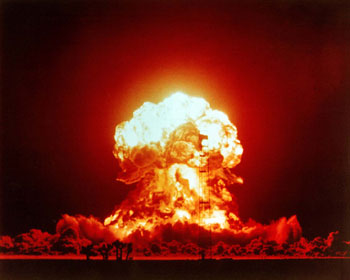He Is the Night, He Is Vengeance, He Is Batman: The Animated Series
Published on September 29th, 2011 in: Cartoons, Comics, Gaming, Halloween, Horror, Movies, TV |By Paul Casey
Batman: The Animated Series was the cause of my love of Batman, superheroes, and later, comic books. I had seen Tim Burton’s wonderful 1989 adaptation early on and went to the cinema to see the underrated and childishly maligned (though rather too scary for my youth) sequel, Batman Returns. I was also aware of the 1960s Adam West TV show.
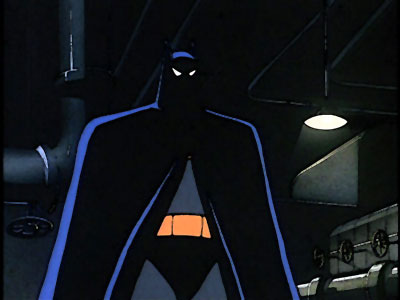
Even though I enjoyed these, it was the Noir shadows of The Animated Series which got to me. The vision of Bruce Timm, Eric Radomski, Alan Burnett, and Paul Dini would stay with me. The opening is perhaps the most evocative and perfect definition of who Batman is as a character. Danny Elfman’s score is Batman.
Crypts And Blood: A Creepy Crawl Through The History Of Horror Hosts
Published on September 29th, 2011 in: Halloween, Horror, Movies, The Internets, TV |By Cait Brennan
“There’s nothing on,” you say. A strangely common complaint in an era with hundreds, if not thousands, of 24-hour-a-day channels. Once upon a time, there was literally nothing on, because the two or three local stations your town was lucky to have would shut their transmitters off at 11 p.m. Stations invented every possible kind of stunt (up to and including running the weatherman’s home movies) to fill airtime, but eventually the exhausted staff would finish the late local news, have a priest give a drunken invocation, run the national anthem, and pull the damn plug.
But as the signals died, there through the flickering static, in the dark dead of night, one station would keep its dim light on, transmitting faded images of 1930s ghouls into your darkened living room. Then, out of the black, when it all started getting just a little too real, some character covered in blood cut their way into the movie and cracked wise. You’ve just met your horror host, and whether your movie was terrifying or just terrifyingly awful, spooky late nights never had a better friend.
(more…)
Greetings Traveller: Tales From Garth Marenghi’s Darkplace
Published on September 29th, 2011 in: Comedy, Halloween, Horror, Science Fiction, TV, Underground/Cult |By Paul Casey
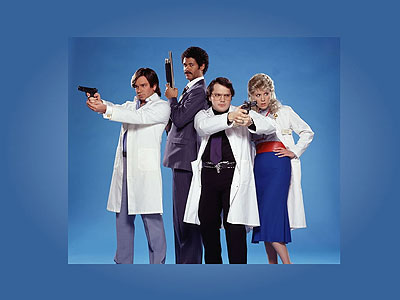
Greetings traveller. Garth Marenghi’s Darkplace was a Sci-Fi/Horror spoof aired on Channel 4 in Britain in 2004. Created by Matthew Holness and Richard Ayoade—who you may be familiar with as Moss from Graham Linehan’s The IT Crowd—Garth Marenghi did not receive the mainstream love of The Mighty Boosh or Peep Show, and yet of all of the sublime, interconnected comedy to come from Britain in the last decade, it may be the greatest.
Everything Undead Is New Again: Are Vampires Still Vicious?
Published on September 29th, 2011 in: Books, Comics, Halloween, Horror, Movies, TV |By Kai Shuart
So, I’m just going to get down to the nitty-gritty: I love me some vampires. They’re violent, they’re sexy, and they’re transgressors of any religious, sexual, or social mores a mortal can think up. And they have the power to give that power to anyone they see fit.
But I am a vampire snob. Don’t come across my way with any of that Stephenie Meyer weak sauce; give me Eli from Let The Right One In, Anne Rice’s Lestat, Cassidy from The Preacher comics, Buffy’s Dru or Spike, or even Barnabas Collins from Dark Shadows (a callous hedonist turned vicious killer vampire turned tortured hero . . . yeeeah, with all due respect to Joss Whedon, the archetype didn’t start with a certain billowy-coated King of Pain). To me, a vampire is first and foremost a killer, and a gleeful one at that. Well, we should all take pride in our work . . .
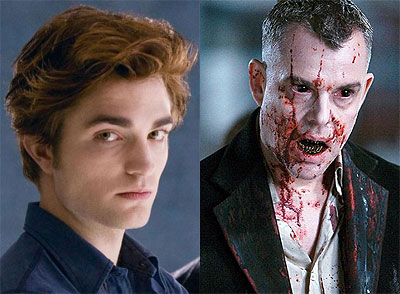
Twilight vs. 30 Days Of Night
I couldn’t help but wonder, though: why does each successive interpretation of what a vampire is and what a vampire does seem so tame compared to the early pop culture incarnations set forth by people like Bram Stoker and F.W. Murnau? This is a monster whose father was Vlad the Impaler, one of the bloodiest, most sadistic dictators who ever walked the face of the Earth; and whose mother was Elizabeth Bathory, a woman who threw orgies and bathed in virgin’s blood because she believed it kept her youthful. Now they sparkle? All snark aside, I had to ask how this shift took place.
Upon consideration, I think part of this comes from a very human need to make friends with what scares us. The thinking goes that if we somehow forge a connection with the monsters (both literal and figurative) that keep us awake at night, the monsters will eventually overcome their natures and spare our lives. This is exactly how the romances play out in modern vampire lore: Twilight’s Edward can smell Bella’s blood a mile away, but doesn’t do the deed because he loves her so much. (This is me. Retching.) In True Blood, there’s something in Sookie Stackhouse’s blood that drives vampires crazy, but Bill Compton protects her from some of his more primal cohorts. To be fair, there’s a lot of this dynamic between Oskar and Eli in the book Let Me In, but at least there’s a question of whether protecting Oskar wasn’t just a by-product of Eli procuring a meal.
The fact that vampires have grown significantly less vicious and amoral as time has gone on could also be because it plays into the rather marketable notion that a good woman can reform a bad boy. Even though Buffy the Vampire Slayer has many, many positive points, even that great show is guilty of this. In the third season, Angel is somehow brought back from the hell dimension to which Buffy sent him after his reversion to his evil Angelus form. In this form, he psychologically tortured Buffy through attacking—and in the case of Jenny Calendar, killing—Buffy’s allies.
After Angel’s return, Buffy finds him in an extremely feral state. But what does our heroine do? Instead of thinking that maybe she was a bit justified in killing her former lover and sending him to hell, she is convinced that the Angel she loved is still in there somewhere. Because of this, she makes it her mission to tame him through regular visits during which she feeds him, reads to him, and does Tai Chi with him.
A final reason for these shifting interpretations of vampires could be the political climate. The massively popular Twilight series was first published during the Bush administration, a period in which everything seemed oriented towards conventional sexual mores. Sure enough, Bella and Edward don’t have sex at all until they’re lawfully wed.
By contrast, Anne Rice’s Interview with the Vampire was released in 1976, within a much more liberal environment that was likely influenced by the attitudes of the previous decade. This could account in some small part for the fact that a story that features Lestat, a sybaritic, gleeful killer vampire who makes no bones about how much he enjoys being a vampire, sold so well. Also, Rice was much less squeamish about the homoerotic elements of her story. For example, as melancholy as he is, Louis finds a “companion” in fellow vampire Armand. It’s not explicitly stated that the two are lovers, but there is certainly ample room for that interpretation.
Regardless of whether these shifts have come about due to political climate, human nature, or the marketing of gendered relationship roles, one thing is for certain: I will keep taking my vampires straight up. Fortunately for me and other like-minded individuals, a much more animalistic interpretation of the vampire has recently been coming into prominence, quite possibly in response to the vampire’s role as the dark, sexy, forbidding romantic figure.
Vampires in the film and comic 30 Days of Night, with their ghostly faces and mouths full of razor-sharp teeth, have a purely animal instinct to kill rather than seduce their prey, and they certainly don’t worry about how killing people affects the state of their immortal soul. Proving that everything comes full circle, this seems to be reverting to the much earlier pop culture incarnations of vampires, borrowing the gnarled claws and batlike visage from Murnau’s Nosferatu.
Will this interpretation eventually overtake its sparkly, more tween-friendly counterpart? Time will tell, but I for one really hope so . . .
In Defense Of Television
Published on July 30th, 2011 in: Books, Editorial, Feminism, Issues, My Dream Is On The Screen, Over the Gadfly's Nest, TV |“There are only two things I love in this world: everybody, and television.”
—Kenneth the Page on 30 Rock“Now I am become death, the destroyer of worlds.”
—The Bhagavad Gita, as quoted by J. Robert Oppenheimer
TV is bad for you, right?
The Supernatural Drinking Game
Published on July 30th, 2011 in: Issues, My Dream Is On The Screen, TV |By Lisa Anderson
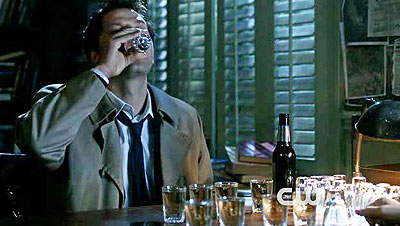
Here’s a drinking game for you fans of Supernatural! Perfect for a DVD marathon or one of the new episodes coming out this Fall. Because it is Supernatural, after all, I decided to go for 13.
(more…)
Commercial Appeal: Three TV Ad Tropes That Have Littered My Life (and everyone else’s)
Published on July 30th, 2011 in: Issues, My Dream Is On The Screen, Staff Picks, TV |By Jesse Roth
Television, for better or worse, has always played a significant role in my life. Its influence, however, did not stop when my favorite shows would “take five” for the benefit of their sponsors. A good portion of my TV-related memories seem to involve the various ads clogging the airwaves, some of which were far more memorable than the shows they were sponsoring. Though I was rarely motivated enough to buy the products they were promoting, the following commercials have found a permanent home in my mind, no matter how hard I try to forget them.
(more…)
The Comfort Of Familiarity: Five Classic Canadian Public Television Idents
Published on July 30th, 2011 in: Canadian Content, Issues, My Dream Is On The Screen, Retrovirus, TV |By Emily Carney
Many television-philes like myself are obsessed with classic station identifications, or idents, from our childhood years. Whenever I hear the old PBS ident music from the 1980s, immediately I hearken back to the days when I used to watch Sesame Street and Mister Rogers’ Neighborhood before taking my Dukes of Hazzard Big Wheel out for a leisurely spin.
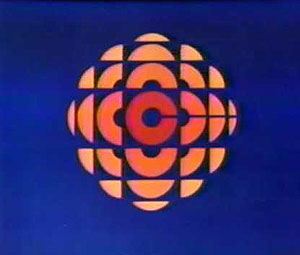
In the last few years, I’ve familiarized myself with some Canadian TV idents which are as cool, diverse, and strangely comforting as their American counterpart’s idents. Here’s a small list of the very best Canadian idents from the past few decades.
(more…)
My Little Pony: Friendship Is Magic Is Magic
Published on July 30th, 2011 in: Cartoons, Feminism, Issues, My Dream Is On The Screen, TV |By Matt Keeley
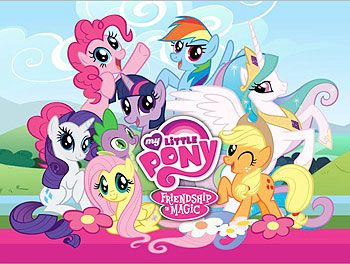
The Hub’s My Little Pony is one of the the best shows on television. I came to it rather late, despite having friends who were already fans, mainly because, well . . . who would ever think that statement could ever be true? But it is. And it’s all thanks to Lauren Faust.
(more…)
The Feminist Mystique: Joan Holloway, Peggy Olson, And Protofeminism In Mad Men
Published on July 30th, 2011 in: Feminism, Issues, My Dream Is On The Screen, TV |By Chelsea Spear
Hey Mad Men fans, let’s play a word association game. When I say to you “Peggy Olson,” what comes to mind? Of course you’d think of the plucky, ambitious copywriter of Sterling Cooper, a Cinderella out of nowhere who’s made a name for herself both through her skill with words and her dogged pursuit of every opportunity that comes her way. Thoughts of Peggy’s unfortunate wardrobe might also cross your mind, as you think about her fondness for mustard yellow and those ridiculous fluffy bangs she rocked in the early episodes.
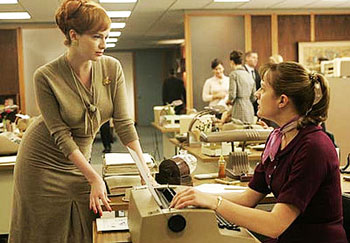
Okay, so let’s try this again, this time with “Joan Holloway.” Two words might pop into your head: Hotchie and/or motchie! Yes, Joan is the series’ breakout character, beloved by voluptuous women and drag queens everywhere for her jewel-toned wiggle dresses, her red hair, and her way with a bon mot. True, she’s saved the bacon at SC and assisted in building the new ad firm Sterling Cooper Draper Pryce, but who are we kidding? She’s as well known for her sex appeal as she is for her efficiency and professionalism.
(more…)
